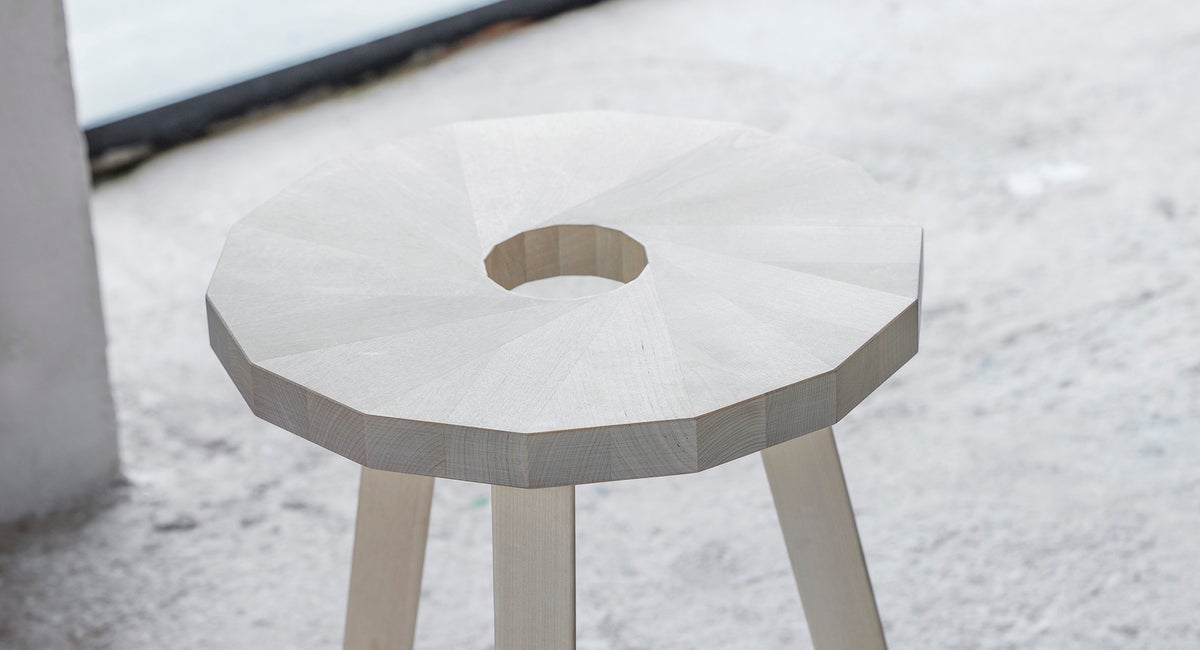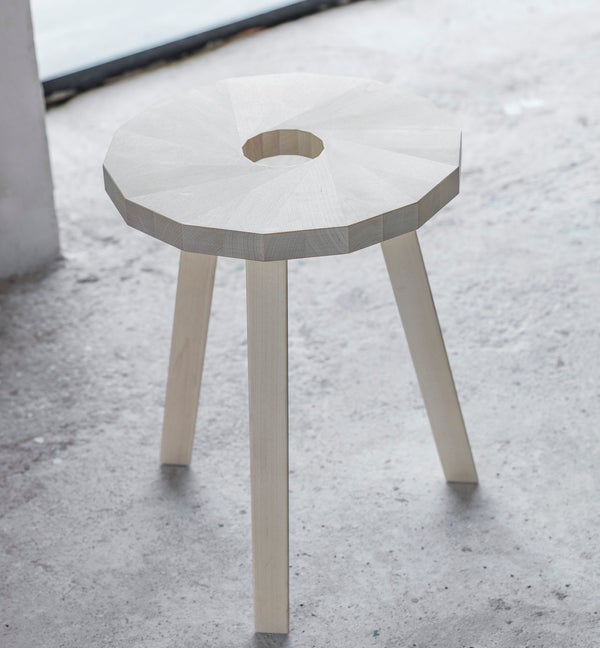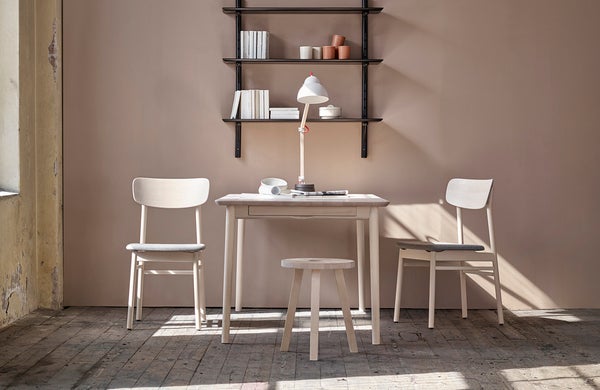
Lilla Snåland stool
In May 2016, I receive an unusual email from Peter Bernroth, our production manager. He writes that we should agree to meet with a designer completely unknown to us. This has never happened before. Peter tends to be more restrained. But suddenly, we have a meeting booked with the designer Marie-Louise Hellgren. I soon realize that she works with up-cycling, or waste. She comes to Stolab, with her dog, Holly (?).
Looking back. I've probably started to get a little soft and started to worry more about our planet and what's going on here. This began in the summer of 2015, in a meeting with our product range board at Fotografiska in Stockholm. Jacob told us about White's view of sustainability. My analysis was in short; that we at Stolab hardly can be considered to have the right to do anything to the environment, which affects my daughter's chances of getting the same conditions as I had. During the autumn, discussions on this theme continued and the references continued to come in. How do we recycle the Little Åland that are defective in our production? How can we take back furniture that is faulty at our retailers, use our factory to repair and restore them and then sell again?
Back to MLH. We step out into the factory and after hearing about, among other things, "the true cost", that the woman once gave away everything she owned, she has been vegan (now only sober vegetarian) before it was fashionable, lived without a television, given the finger on the fast consumption and even nowadays is considered normal by her children, we stop in front of our double jet. At this time, today, seats are being produced for Lilla Åland. Before the operator places the raw material of the seat in the machine, he saws off two triangular pieces that otherwise had been pulverized in the machine and become too much dust. This procedure does not take place every day, nor every week. Even though we make at least 15,000 seats in one year. This triangular piece has been a point of discussion with us for decades. Usually in the form of giving us problems. Previous machines that manufactured the seat had a source of error in that the piece, which then had a wavier shape, often fell and got stuck in the mechanics or the machine's extraction. Something we have lived with for decades. Many pieces like that has been pulverized down and there are probably several people who have thought the idea that we should do something with them instead. But, never got to it.
It was a coincidence that we stopped right here in the factory at just that time. That MLH saw these waste pieces being "produced" and saw the possibility of making something out of them. After having over a thousand triangles sent home to her, work began on MLH's form. A form that was developed together with our furniture carpenter at Stolab. Only a couple of months later, about ten stools were left at Formex in Stockholm and after this the product has been seen on Swedish television (both SVT and TV4), appeared in various newspapers, and been selected for the National Museum's of Sweden's permanent collection. It has become an iconic unique stool. / Martin Johansson, CEO and owner Stolab

